Soil compaction is a serious consequence of urban development activities and is the basis for many of the problems faced by landscape contractors and managers. In urban soils, compaction can lead to problems with soil drainage, aeration, nutrient cycling, and plant growth. The arrangement of individual soil particles forms the structure of the soil. The space between particles can be filled with water or air. Interconnected spaces also allow for water to move through soil. Soil compaction occurs when the soil structure is compressed, thereby reducing the number and size of the pore spaces between particles (Figure 1). Soil compaction in urban areas is often caused by the use of heavy equipment during construction and constant traffic (foot or equipment) in existing landscapes. Compaction can be exacerbated when heavy equipment is used during periods where the soil is very wet.
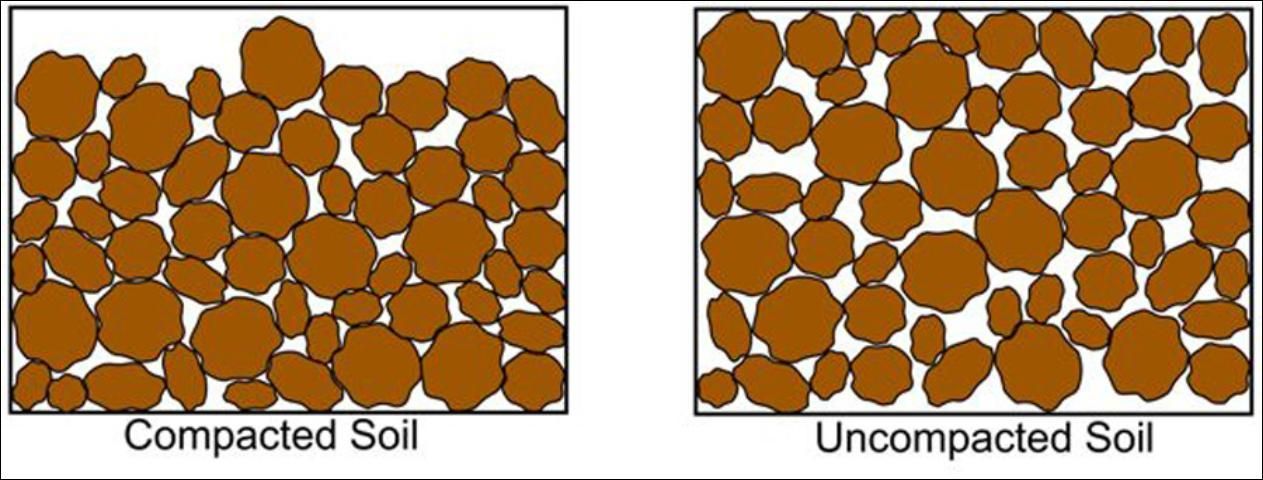
Credit: Geoff Denny
Compaction increases the load bearing strength of soils, by reorienting particles into a stronger, but denser structure. Compacted soils provide a stable foundation for homes, but they are not ideal for plant growth or water movement through the soil. In fact, it may be nearly impossible to establish plants in compacted soils. Soil compaction reduces the total number and size of pores, which are critical in supplying the plant roots with water and oxygen (Figure 1). Soil compaction also increases resistance to root penetration, making it harder for roots to grow through the soil. Soil compaction can extend more than one foot below the surface, with the most compacted depths being greater than 6 inches below the surface. This can cause development of a shallow rooting zone, which can lead to poor plant growth and increases the need for irrigation and fertilization. As a result, significant soil compaction can lead to added costs for the landscape professional or homeowner if dead or declining plants require extra care or replacement. Soil compaction can also have detrimental effects on the environment. Smaller pores hold less water and reduce infiltration rates, leading to increased runoff and potential for erosion, which can, in turn, increase the delivery of nutrients and other pollutants to nearby water bodies.
If you suspect your soil is compacted, it may be useful to do some "digging" into the problem. One way to determine if soil compaction is a problem in your landscape is to check for resistance to soil penetration. Professionals use a tool known as a cone penetrometer to measure compaction. However, a similar test can be done using a garden shovel, a soil probe, or even a sharpened wood pencil. If you have trouble inserting these implements into the soil to depths greater than a few inches, you may have a problem with compaction affecting the root zone of your plants. A common way to determine the level of soil compaction is by measuring the bulk density of the soil. Bulk density is the mass of dry soil per unit volume (e.g., grams per cubic centimeter) and accounts for the spaces between the soil particles (pore space) as well as the soil solids. Soils with a high proportion of pore space have low bulk densities and vice versa. Sandy soils with low organic matter tend to have higher bulk density than clayey or loamy soils. Bulk density may range from normal (approximately 1.4 g cm-3) to extremely packed (2.2 g cm-3) in urban soils. For more information on soil bulk density, please see EDIS SL451, Soils and Fertilizers for Master Gardeners: Soil Physical Characteristics https://edis.ifas.ufl.edu/publication/MG458.
Dealing With Soil Compaction
Prevention
The easiest way to deal with soil compaction in landscapes is to prevent it from happening. This can be done by eliminating or reducing the amount of traffic over future planting areas during site construction. Spreading a thick layer of mulch over the planting areas during construction may also reduce soil compaction. Also, it is best to avoid working the soil when it is very wet. While these practices may help avoid compaction, it is probably safe to assume that the soil is already compacted when you arrive at a new landscape job site. If a soil compaction problem is pre-existing, there are a few options for improving compacted soils.
Tilling
Tilling can be used when soil conditions are moist to dry (not wet) to break up soil compaction and create more pore space, allowing more water to infiltrate and roots to grow. There are several different tillage options, including:
- Deep tillage or subsoiling can be used to break up compaction (up to 24"–36" deep) in the subsoil. While subsoiling is considered the most effective means of breaking hardpans and loosening compacted soils, it requires large machinery (Figure 2) and is often impractical in urban areas because of buried utilities and the cost associated with it. While subsoiling oiften cannot be used to improve existing landscapes, it may be an option at construction sites if implemented before installation of utility lines and landscape plant materials.
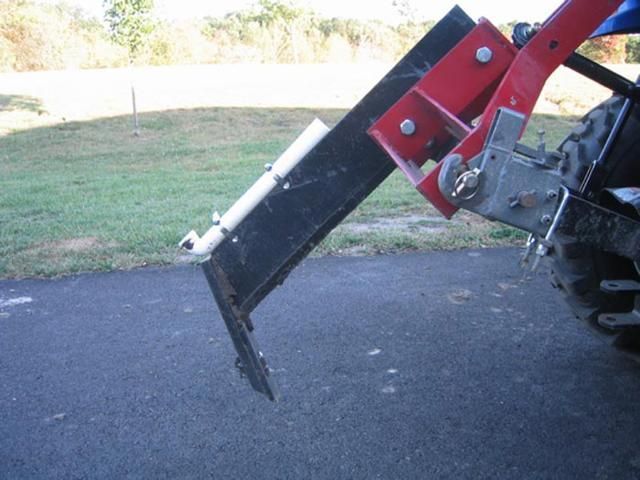
Credit: Wikimedia Commons
2. Shallow tillage with a rototiller or similar equipment is one of the most effective ways of breaking up surface compaction; however, it can only improve conditions within the top 6 inches of soil. Shallow tillage is usually done at a depth that will not damage buried utilities, particularly with respect to irrigation lines that are typically shallower than other utilities. It should never be done around existing trees as root damage can occur and should not be used in existing turf (Figure 3). Incorporating an amendment, such as compost, with tillage can help improve soil structure of sandy soils, which can consolidate back to pre-tilled conditions after turfgrass installation and establishment.
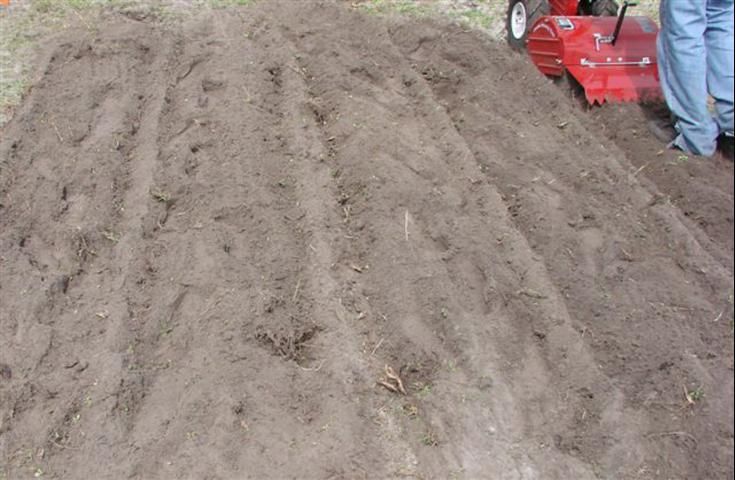
Credit: Gitta Surberg, UF/IFAS
3. Plug aeration is frequently used to reduce compaction and improve drainage and aeration in large turf areas, like golf courses and athletic fields. It is not as effective as shallow tillage, but offers a safe alternative in existing landscapes (Figure 4).
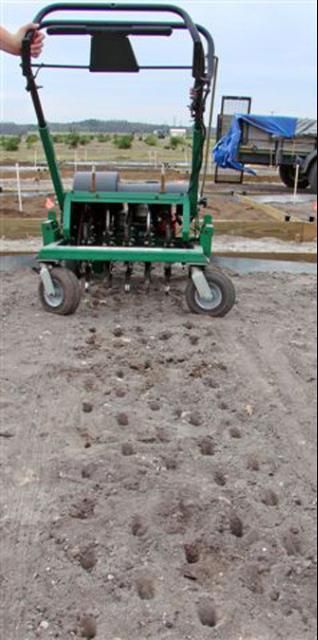
Credit: Gitta Surberg, UF/IFAS
4. Air tilling is as effective as shallow tillage and is safe around trees because it will not damage the root system. It uses compressed air from a special high-pressure gun to loosen the soil (Figure 5). This technology was developed by the gas industry to safely excavate around buried gas lines and is gaining popularity among arborists worldwide.
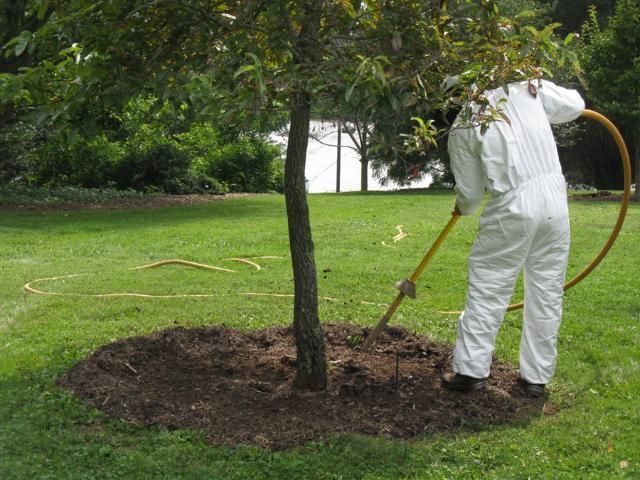
Credit: Ed Gilman, UF/IFAS
Compost
Tilling compost into the soil can help reduce compaction and increase the soil's water and nutrient holding capacity. There are many organic materials that can be used as feed stock for compost that can be used to relieve soil compaction (e.g., manures, recycled yard wastes, and municipal biosolids). Compost can be incorporated into new landscape soils using tillage. A 1-inch layer of compost incorporated with tillage is usually enough to improve the top 6 inches of soil. When selecting an organic amendment material to add to a compacted soil, make sure it is well composted. Organic materials that are not well composted tend to have high carbon to nitrogen (C to N) ratios. When high C to N ratio materials are incorporated into the soil, microbes will incorporate any N available from the soil into their biomass, thereby rendering it unavailable to plants. Therefore, you should never incorporate uncomposted mulch into the soil. As a rule of thumb, if you can see what it was before it became compost (e.g. leaves, twigs, wood chips), then it is not ready to be incorporated.
Compost can also be applied as a topdress (material spread across the top of turfgrass) in both existing and new landscapes. Topdressing compost is not as effective in alleviating soil compaction as incorporating them with tillage, and the results will be slower to appear. When topdressing existing landscapes with compost, you should add no more than 1 inch at a time so that plant material is not covered up or smothered. Further it is best to use compost that has been screened to a finer size (<1/4-inch size) than might be used as a soil amendment (typ. ½ inch size). Mulch can also act as a source of topdressed organic matter as it decomposes. The effect of mulch on soil organic matter will depend greatly on its decomposition rate. For more information about organic soil amendments, see EDIS SL273, Soils and Fertilizer for Master Gardeners: Soil Organic Matter and Organic Amendments https://edis.ifas.ufl.edu/MG454.
Soil Replacement
Perhaps the most intensive—and expensive—method of dealing with soil compaction is soil replacement. This involves excavating the compacted soil at the site and replacing it with another material. This may simply be a different fill soil, or it can be an "engineered soil." Engineered soils (sometimes referred to as structural soils) are specifically designed to provide the soil strength requirements to support a structure (usually created by compaction), as well as meet the plant requirements for healthy root growth and development. There are several commercially available engineered soils for use in urban landscapes. For more information, visit http://www.hort.cornell.edu/uhi/outreach/pdfs/custructuralsoilwebpdf.pdf.
Remember, by correcting soil compaction before planting you may be able to save yourself a lot of headaches and money later!